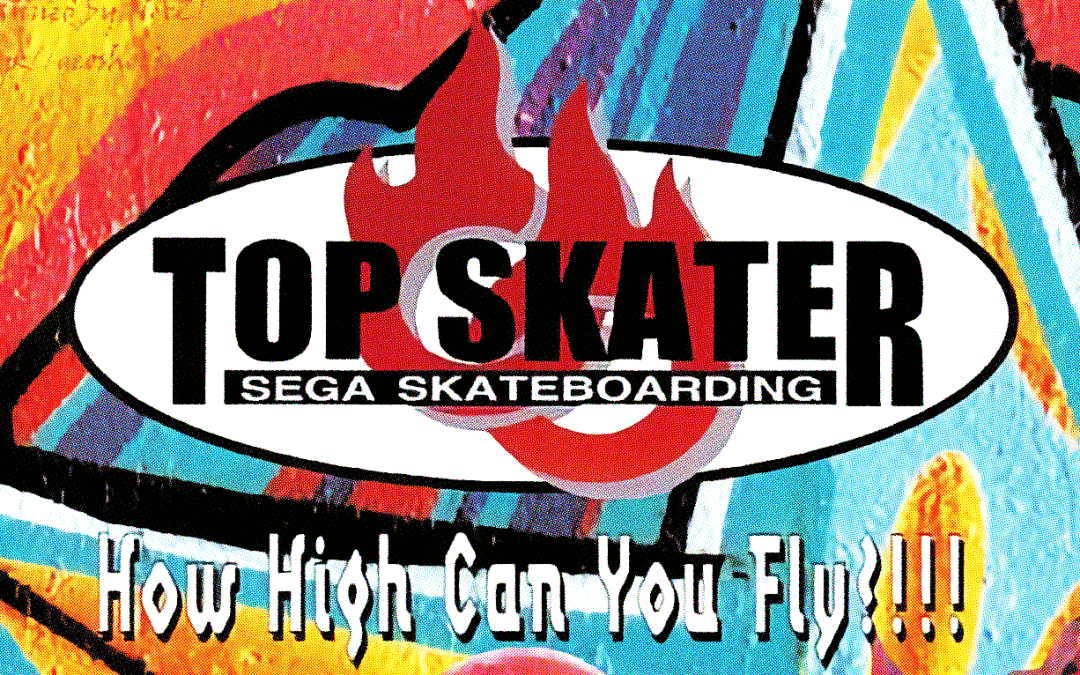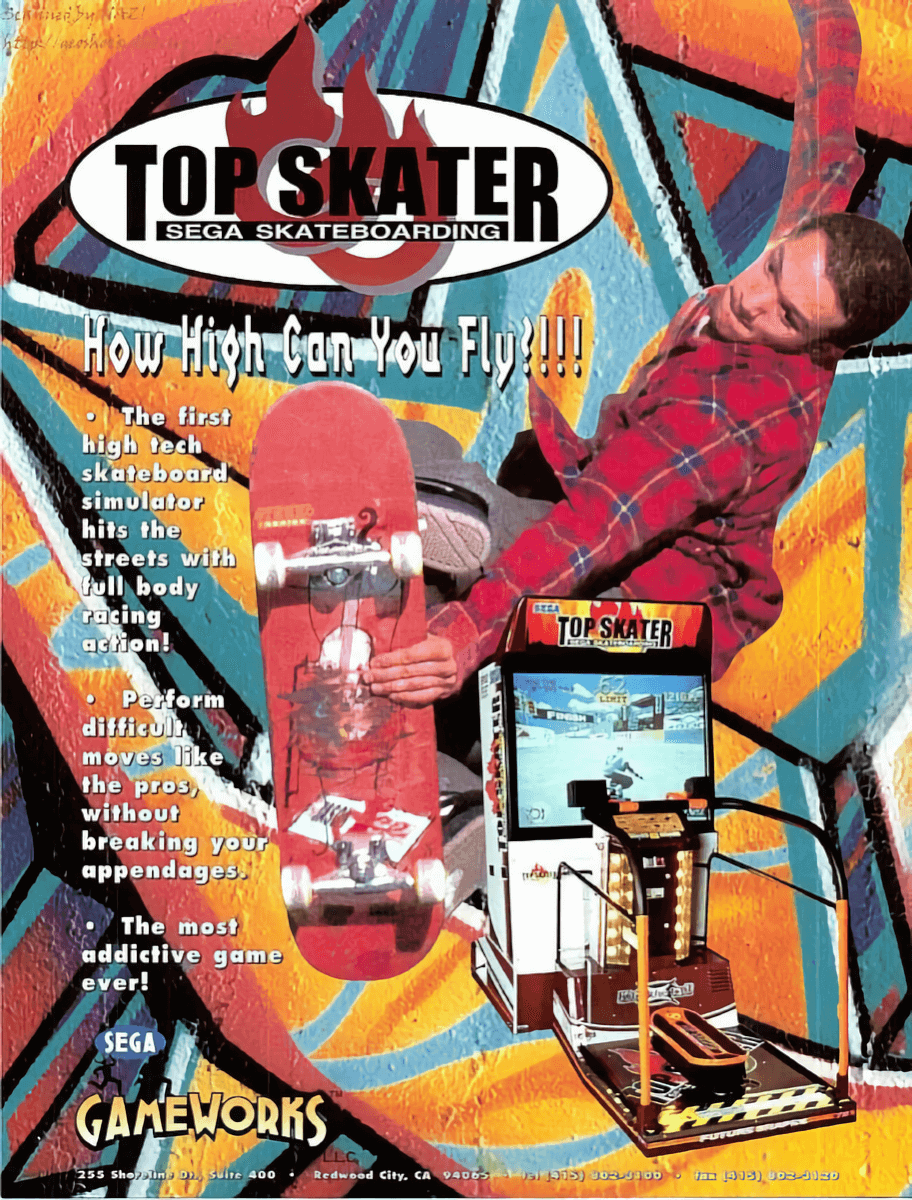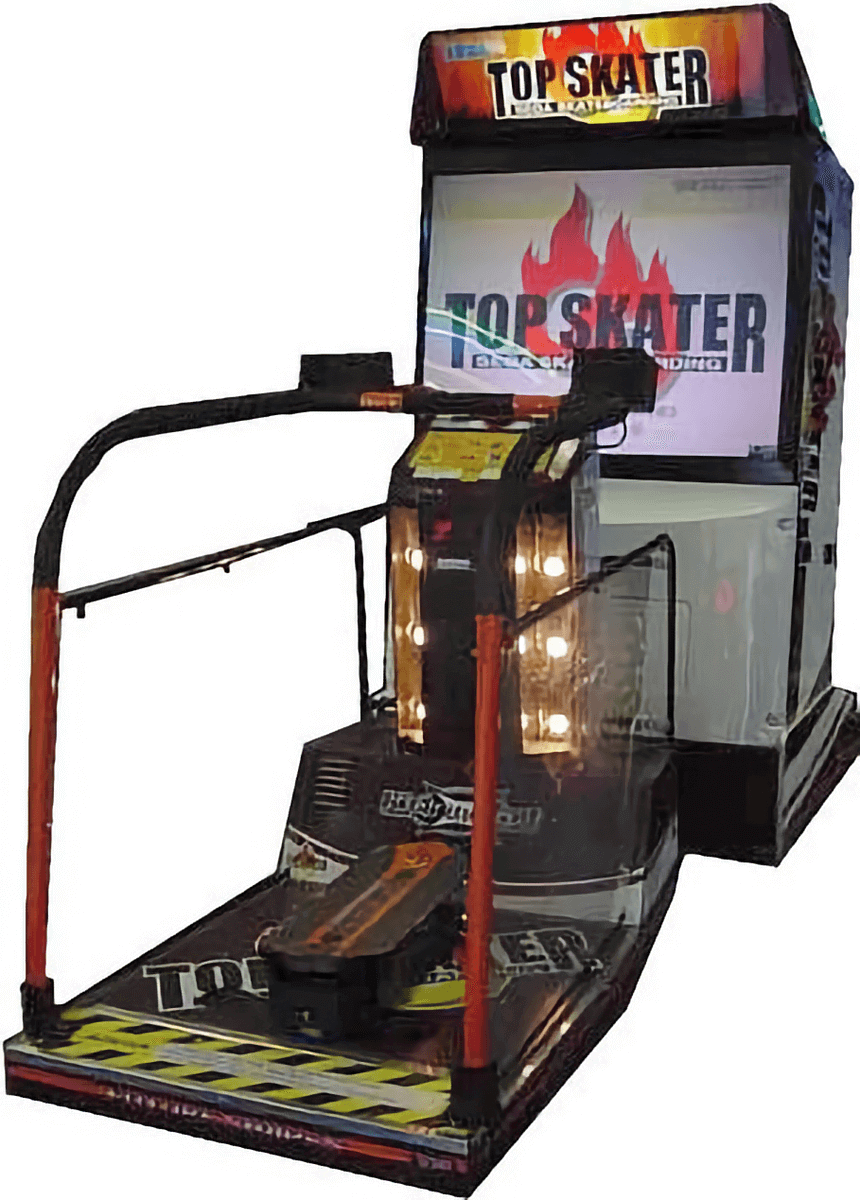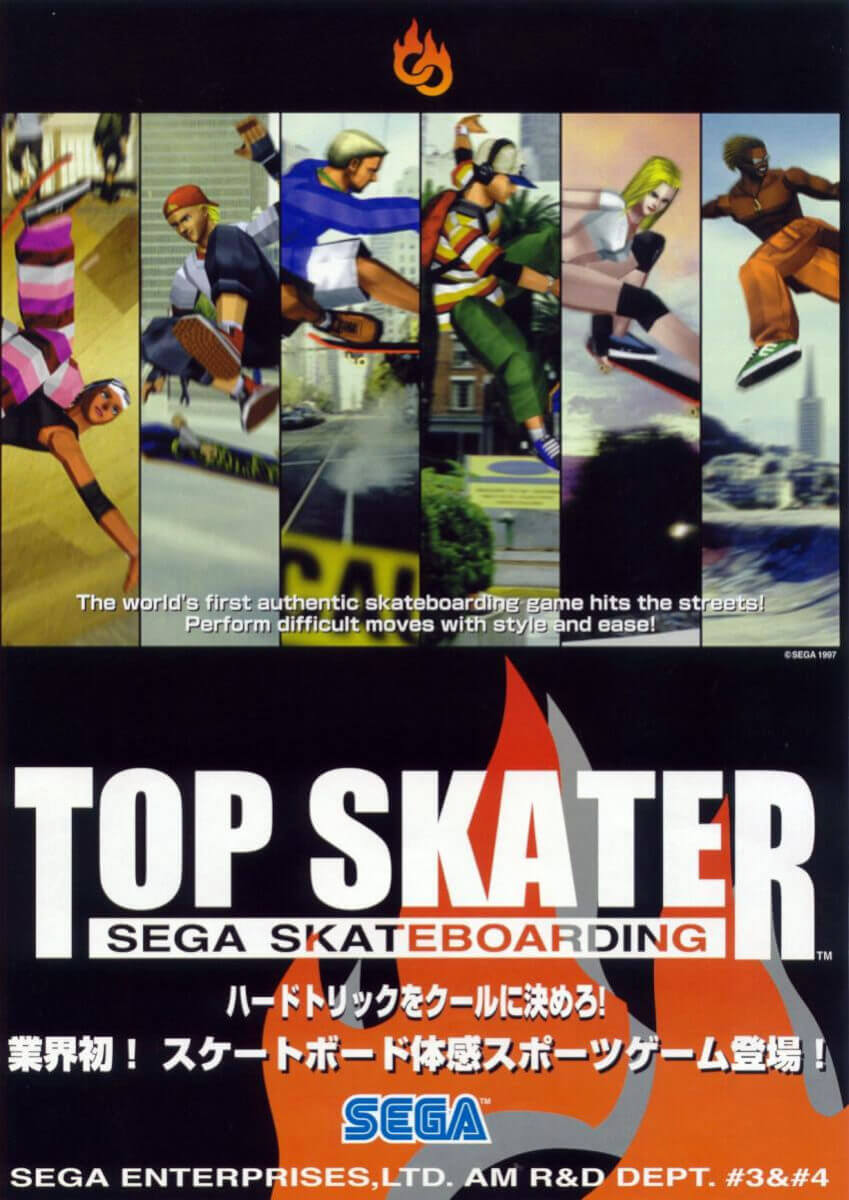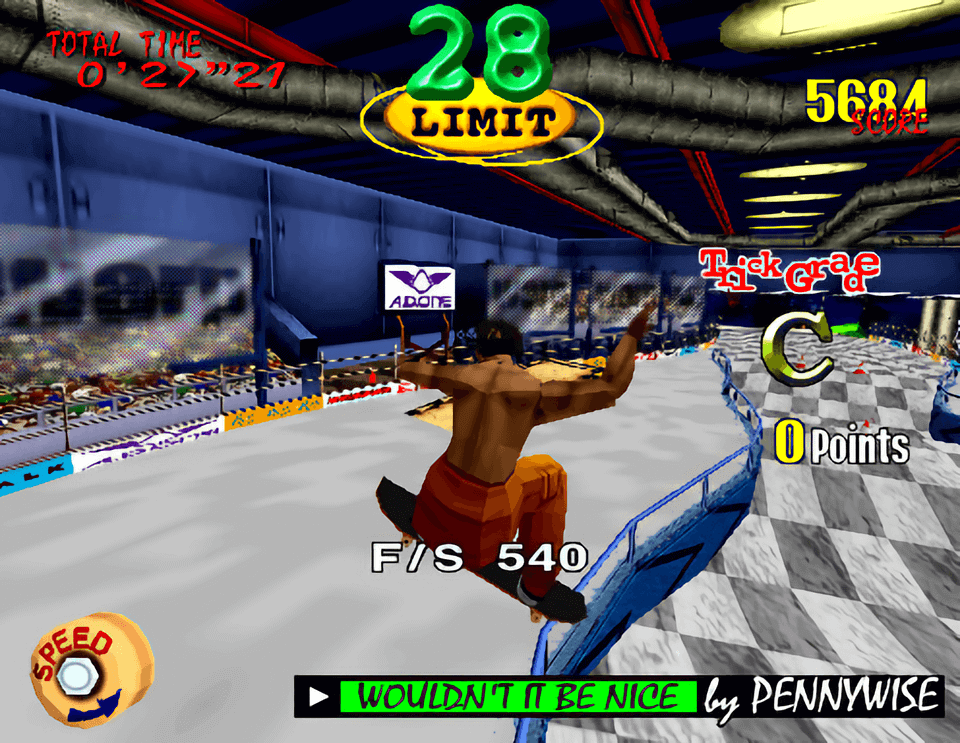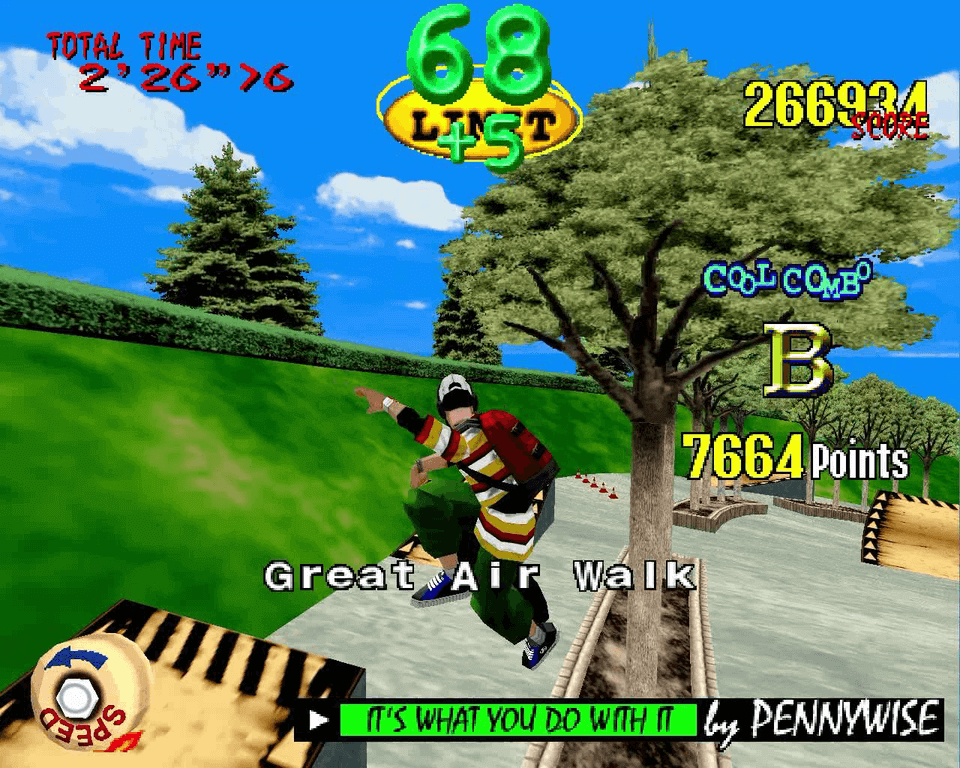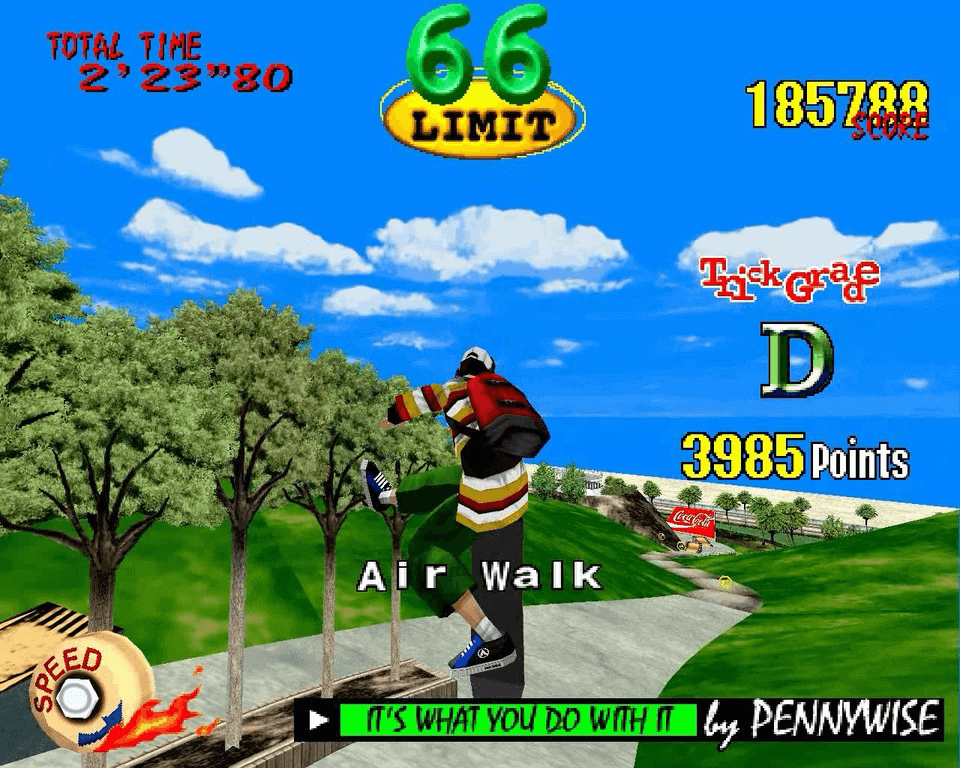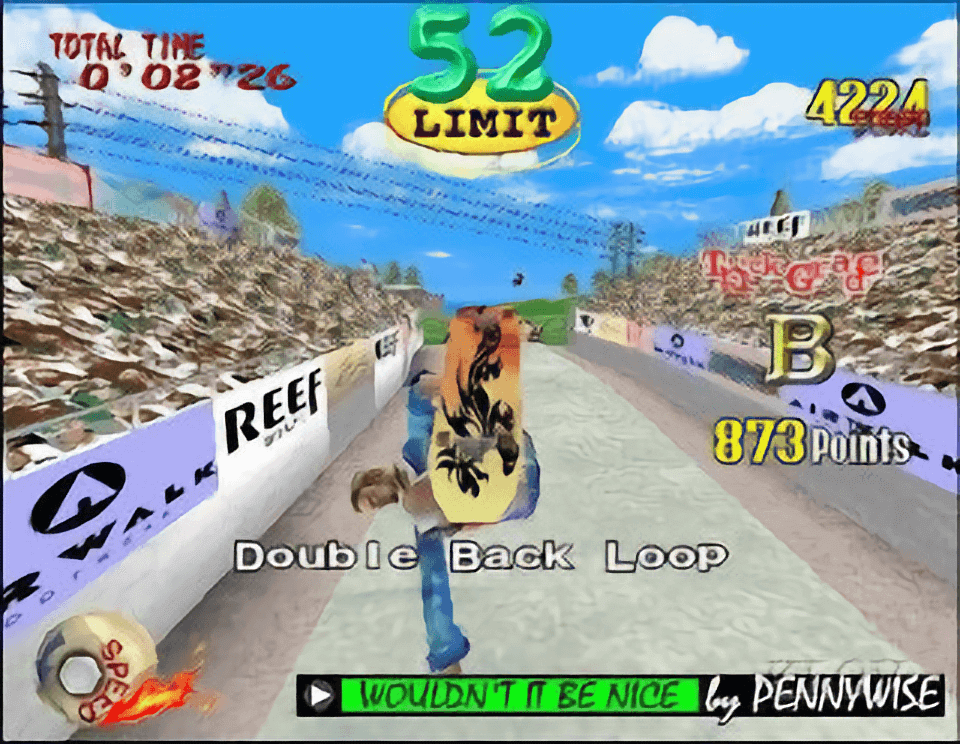Skateboarding games began, in earnest, in the arcades. In last week’s Radical Retrospective, we talked Atari’s 720º, the first major milestone in skateboarding games. 720º went on to spawn a half-dozen imitators in the 1980s, but by the time the 1990s rolled around, skateboarding games had mostly fallen out of favor. Notably, there are no dedicated skateboarding games for either the Sega Genesis or Super Nintendo.
With the leap to polygonal gaming in the mid-90s, any game involving speed and four wheels suddenly became more viable. While Sega wasn’t the first to tackle skateboarding in three dimensions, their 1997 arcade release ‘Top Skater’ was ground-breaking and kick-started a new wave of extreme sports games.
1997’s Top Skater: A New Dimension For Skateboarding Games
In 1995, Kenji Kanno had directed just two games for Sega’s AM3 team. The first, a successful Jurassic Park light-gun game, was a worldwide success, being supported by Sega’s technical team all the way up until 2017. Kanno’s second game for AM3, Funky Head Boxers, was a Japan-only arcade boxing game, where fighters had cube-shaped heads that became deformed over the course of a fight.
For his third game, Sega wanted his team to tackle an extreme sports game. He told Sega Saturn Monthly, “a certain ‘N’ company has made a game using snow, [so] we chose skateboarding as the theme of this game.”
- Top Skater – Poster 1
- Top Skater – Cabinet
- Top Skater – Poster 2
Crucially, Kanno was insistent that the game shouldn’t be a traditional racing game, saying, “from the beginning, I wanted to adopt tricks. It wouldn’t make sense to make a skateboard racing game… If the game were a racing game you wouldn’t want to do any tricks as you’d be absorbed in trying to race as fast as possible.” This distinction proved critical, as the choice to focus on tricks over speed would be an element of future successful entries in the genre, like Tony Hawk’s Pro Skater.
In a retrospective for The Ringer, David Stohl (producer of Tony Hawk’s Pro Skater) said, “There was a stand-up arcade machine across the street from Neversoft called Top Skater. It was in a bowling alley and we’d all go across the street and play that.” Lead Artist Silvio Peretto adds in another retrospective for Jenkem, “It was this weird Japanese, over-the-top take on skateboarding but it had a really nice camera and it was done in 3D, so we looked at that for inspiration.”
“Cool” Is The Idea
The game’s fun-over-realism attitude influenced other Sega games of the era, including Crazy Taxi (Kenji Kanno’s next game) and eventually Jet Grind Radio. The balance was something the team considered from the jump, deciding early on that the game needed to feature real tricks as well as over-the-top tricks pulled from the team’s imagination.
According to Kanno, “If we had an interesting idea for a trick we’d give it a go and see how it turned out. We kept the main core of basic tricks from beginning to end. After that we tried to develop the unrealistic tricks. We had to use our imagination because these tricks don’t exist. [The] word “cool” is the most important idea.”
All these ideas would have proved fruitless without proper execution. Thankfully, AM3 worked with Sega’s AM4 hardware team to create the ultimate cabinet experience. The cabinet housed a massive 50″ display, two huge speakers facing the player, and the true star of the show: a skateboard-shaped controller with three-axis controls.
The first-of-its-kind controller was designed to mimic an experience as close to skateboarding as possible, without being inaccessible to new players.
Aiming for a hit in the United States, they packed the game and cabinet full of nods to authentic skateboarding culture. Brands like Airwalk, es, Etnies and Vans were represented. The entire soundtrack was comprised of songs from California Punk band Pennywise, a staple in the west coast skate-punk scene.
Legacy, Sequels & A Shameful Lack Of Ports
The game had a wildly successful run in North America, eventually getting released in Europe with a secret level, big head mode and two secret surfer characters. It spawned a sequel, Air Trix, and a racing-focused spiritual successor, Ollie King. Kanno went on to direct the aforementioned Crazy Taxi, and more recently worked on the underrated Sonic & Sega All-Stars Racing series. The rest of the team went on to work on other renowned games like Jet Grind Radio, Virtua Tennis and Sega Rally.
While the game was never ported to home consoles and remains very difficult to emulate, its influence looms similarly to 720º’s before it. If you can, play it in an arcade someday. The cabinets are still relatively abundant, and the gameplay is timeless. If you can’t get to a cabinet, though, simply play any extreme-sports game that came after it; you’ll feel its DNA in every nonsensical, gravity-defying trick you do.
